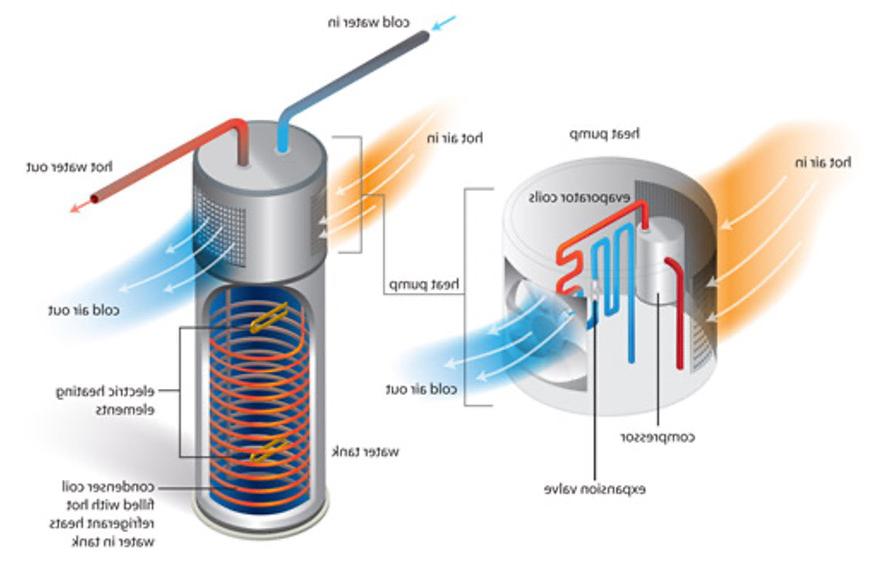Electrify with Heat Pump Furnaces and Water Heaters
Heat pump furnaces use electricity to transfer (rather than generate) heat. During warmer months, heat pumps transfer heat from inside your home to outside; and during cooler months, heat pumps transfer heat from outside your home to inside.
Heat pump water heaters use electricity to move heat from one place to another instead of generating heat directly. To move heat, heat pumps work like a refrigerator in reverse. Heat pump water heaters are most efficient when surrounded by warm air, so they are typically located in garages, basements or areas without air-conditioning.
Image Credit: Energystar.gov
